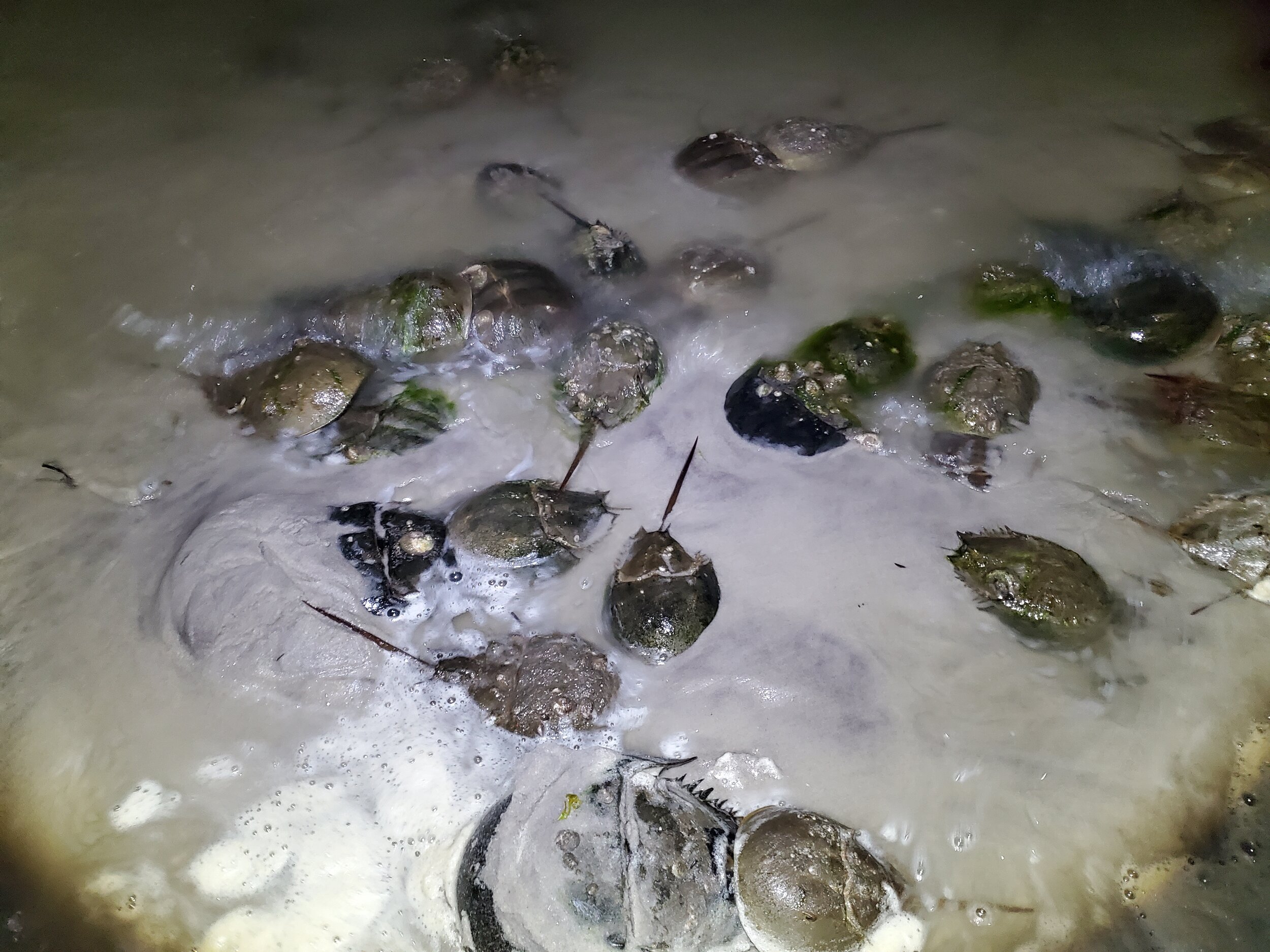From the Field: A Night of Monitoring at Tiana
As June comes to an end, so does our 2021 horseshoe crab monitoring season - our second year monitoring at our Tiana Bayside Facility! Overall, we had a very busy spawning season with mostly cooperative weather.
Around the full and new moon events of May and June, our local horseshoe crabs will gather in the thousands to spawn at our local beaches. During each full and new moon cycle, we head out at high tide (even if it’s at midnight!) to collect important data on spawning abundance, size, sex, and tag returns. This data is then used to help the NYS DEC assess the status of horseshoe crabs in New York State. Come along with us to learn what it’s like to participate in a night of monitoring at Tiana!
We arrive at our site a little before high tide to gather our gear and coordinate with our volunteers for the night. As soon as everyone is assembled, we hike out to our site’s starting point. Just before we begin our population survey, we collect environmental data including cloud cover, air temperature, water temperature, wind speed and direction, wave height, moon phase, and offshore visibility.
Then, the counting begins! And depending on the night, we may see anywhere from 20 to over 1,000 horseshoe crabs! As we walk along our pre-determined transect (about 250 meters) we keep track of how many horseshoe crabs we can see, making sure to differentiate the number of males vs. females, and whether they are in the submerged-zone (underwater) or the surf-zone (exposed). We also always keep an eye out for horseshoe crabs that have already been tagged and make note of any that we see.
Once we reach the end of our transect, we stop counting and measure offshore visibility once more. With the population survey complete, it’s time to start tagging! As we return walking to our starting point, we’ll stop to tag randomly selected horseshoe crabs with button tags. For every one tagged, we also collect some data on the individual: sex, prosoma width (size), shell stage, and the percentage of epibiont coverage. The shell stage helps us estimate the age of the horseshoe crab, and the epibiont coverage estimates how much of its shell is encrusted with epibionts (other living organisms such as barnacles, algae, slipper snails, etc.).
And that concludes a typical night of horseshoe crab monitoring at Tiana! Although we wrapped up our 2021 monitoring season, we hope you can join us in 2022! Click here for more information on the NY Horseshoe Crab Monitoring Network.










